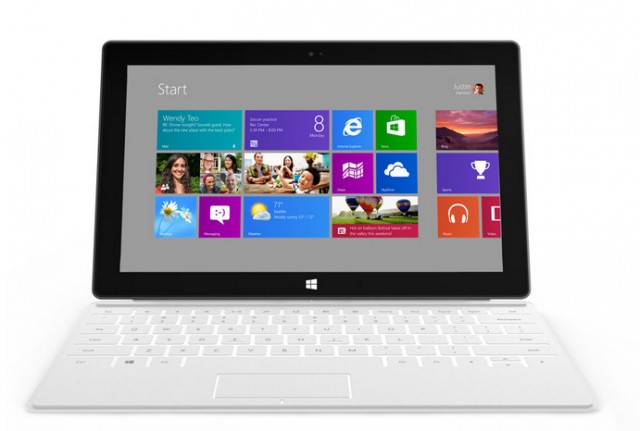
If any device were built for Windows 8, it's the Surface. The Surface is the standard-bearer for Windows 8. It's the benchmark that Microsoft hopes will inspire the OEMs to produce a range of highly desirable Windows devices. It's the machine against which all other Windows 8 machines will be compared. And it's the machine that Microsoft said it had designed explicitly for Windows 8.
But the company's June event in Los Angeles to announce the two Surface tablets was more than a little strange. While Microsoft making a PC might seem sufficiently momentous to deserve an event all of its own, it apparently was not. Instead, the company spent a fair bit of time talking not about the Surface tablets themselves, but, of all things, their keyboard covers.
This seemed a little odd, but it was easy to think, at the time, that Microsoft was simply trying to capitalize on an obvious trend in the iPad sphere. Add-on keyboards are popular iPad accessories, and they greatly enhance the iPad's usability when writing a quick e-mail or jotting down some notes. A clever keyboard add-on is a straightforward way to both set the Surface apart from the iPad, and make it more useful to boot.
It's when you use Windows 8 as a pure tablet in the guise of an iPad or Nexus 7, a tablet that has touch input and touch input alone, that you realize that perhaps Microsoft is doing more than just trying to introduce a point of differentiation.
While the touch parts of Windows 8 are all very good, not all parts of Windows 8 are built for touch. Some parts are inherited from Windows 7, and as such, they're built for pixel-perfect pointing devices (mice, trackpoints, or touchpads) and are greatly enhanced by hardware keyboards. The same is true of the Office 2013 applications, some of which ship as built-in parts of Windows 8's ARM counterpart, Windows RT.
The hardware that Microsoft itself has built for Windows 8 reflects this. It may look like a tablet, but it comes with a keyboard and a touchpad. In a promotional site that is worryingly devoid of details and useful information, one of the few things that is confirmed is that the Surface will come with a combined keyboard/touchpad cover.
Microsoft is telling both users and hardware manufacturers alike that to get the most out of Windows 8, you're going to need a keyboard and a pixel-perfect pointing device. Touch alone just doesn't cut it.
The Surface is delivering two messages to the other PC OEMs. There's the obvious message of "you must be at least this thin and well-designed," but there's the other message too: "you'll need a good mouse and keyboard solution." The Touch Covers and Surface's integrated kickstand are all there to tell the OEMs, "don't just ship a straight tablet."
Microsoft even has a fallback plan for those OEMs that don't heed the message. The recently announced Wedge Keyboard is a Bluetooth keyboard that includes a fancy cover that doubles up as a stand for almost any tablet. Partner it with a Wedge Mouse, and while the result isn't as neatly integrated as the Surface covers, it's nonetheless sufficient to fill the gaps that a pure tablet shows.
Redmond has long claimed the tablet to be a kind of PC. Most recently, it suggested that the "PC Plus" is the future: devices will combine the capabilities of the PC with the ease-of-use and convenience of the tablet.
We're sympathetic to the idea, if it's done right. Having a tablet device that gives you the option of using a mouse and keyboard so that you can, for example, make some fix-ups to a document or a spreadsheet without losing formatting or breaking formulae—there's nothing wrong with that ideal at all. Nor is there anything bad about having a device that can be used with keyboard and mouse at a desk for a full day of work, but which is equally useful when lounging on a sofa while watching TV.
But Windows 8 exposes the great danger of Microsoft's vision: a software environment that forces you to go "PC" when all you want is the "Plus" bit. If the iPad has taught us anything at all, it's that there are a lot of people out there who are happy with pure tablets, and actively desire pure tablets. Windows 8 gets a lot right, but its PC side is still there, and it's inescapable.
The Surface covers are an attempt to make this as painless as possible. You'll be able to carry around that touchpad and keyboard with only a marginal increase in size and weight, and you'd probably want a screen protector for your tablet anyway. As ameliorations go, they're not that bad.
But if you want your tablet to be just a tablet and to never force you to opt for conventional input devices, the message from the Surface is loud and clear: Windows 8 isn't the operating system for you.
Listing image by Microsoft
reader comments
313